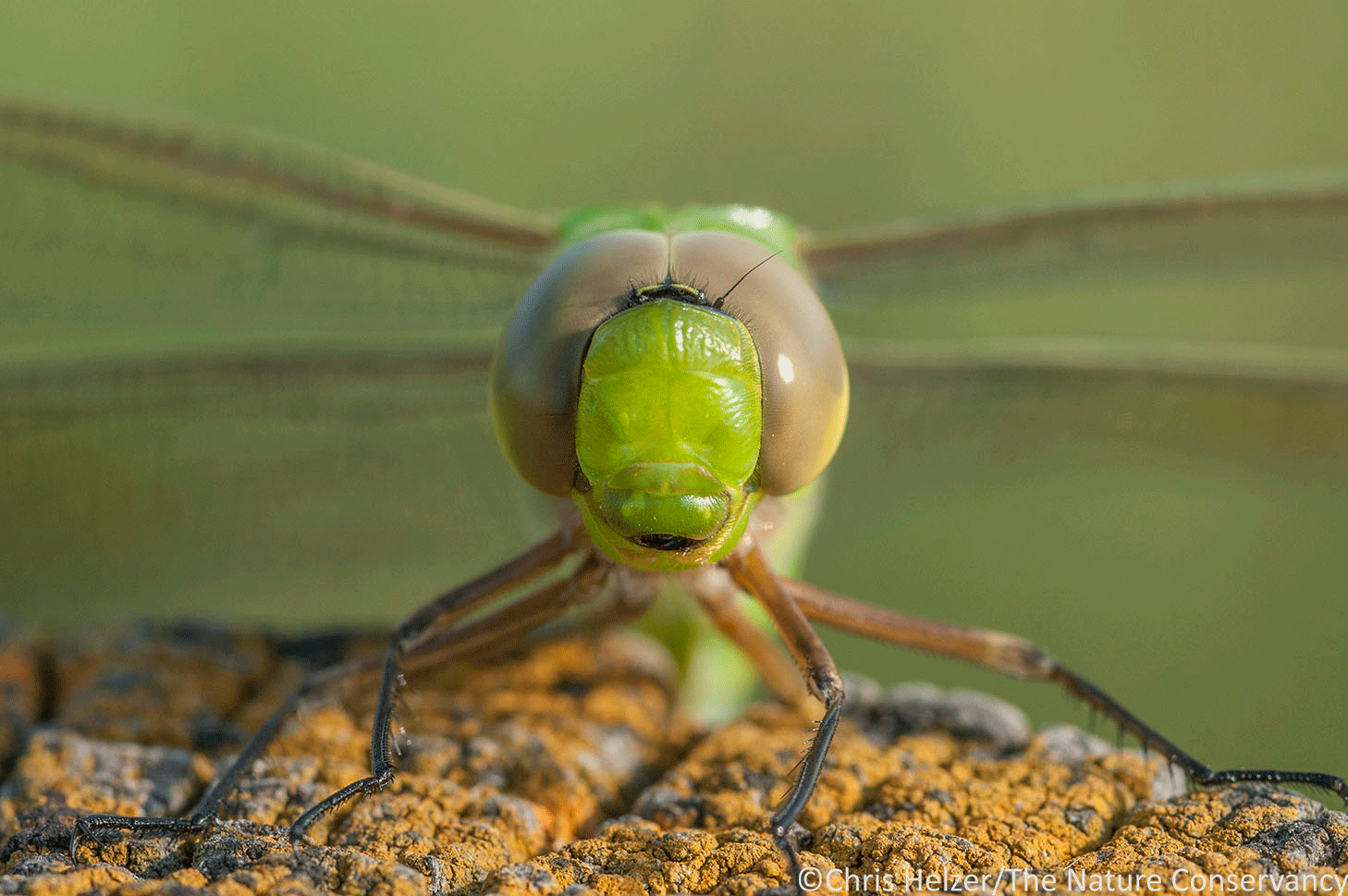Insect migration has long been fascinating to me. I’ve written several posts on this before, including one on migrating moths and one on painted lady butterflies. We’ve long known that many dragonfly species are long-distance migrants, including the large charismatic green darner. Citizen science records have helped document that migration, but there have been many questions about the details. A new study has now cleared up many of those questions, revealing a fascinating story.

Green darner dragonflies (Anax junius) is a common species here in Nebraska and throughout much of North America. For years, we’ve known that the species migrates because people have kept track of when large flocks (herds? squadrons?) are sighted each year. However, green darners can also overwinter in the northern U.S. as aquatic nymphs (their immature stage). The speed of development for an egg apparently depends upon temperature and photoperiod (day length). Some eggs develop quickly into nymphs, which quickly grow and molt into adults. Others develop very slowly and enter diapause (dormancy) over the winter months, emerging the next spring to become adults.

The authors of the new study (read it HERE) combined citizen science observations with stable isotope analysis to piece together the migration story of the green darner. What they found was an annual cycle comprised of at least three generations. The first emerges in the southern part of the continent between January and May and migrates as far as the northern edge of the U.S., where the dragonflies lay eggs and die. A second generation emerges in the north and migrates back south late in the year. That second generation includes darners that were born the previous year and overwintered in the north, as well as others that hatched and matured within the same season. When fall migrants arrive in the south, they lay eggs that grow up to form a non-migratory population. The individuals in that population live their whole life in the same general area. The eggs laid by that non-migratory generation become adults that migrate back to the north in the spring.
So to summarize, if you’re a dragonfly whose parents migrated south, you will grow up into an adult that lives its entire life in the south without migrating. However, your kids will migrate to the north where they will lay eggs before they die. Those eggs might turn into adult dragonflies that same year or they might not become adults until the following year. Either way, those new adults will migrate back to the south where they will become the parents of another non-migratory population.

It’s exciting to better understand the migratory patterns of the green darner. Hopefully, we can get more information on the many other migratory insect species soon. Knowing how and when insects migrate is, of course, fascinating in its own right, but there are also practical conservation implication. That information can inform the way we manage individual sites to ensure management actions don’t interrupt insect cycles at critical points. Even more importantly, understanding migratory patterns helps us consider how climate change might affect them. Temperature shifts and increasing intensity/frequency of droughts are both factors that could potentially have large implications for migratory dragonflies and other insects.
Insect migration is just one of many phenomena we still have much to learn about. On the one hand, it’s invigorating to know there are still plenty of unexplored frontiers out there for scientists studying natural history. On the other, there’s a sense of urgency about getting those data so we can act on them. Either way, I’m grateful for those scientists who manage to find funding for these kinds of projects. They are forging ahead, studying creatures most people ignore, but that play critical roles in the survival of ecosystems and the people who depend upon them.

It would be very interesting to know if that second generation that migrates north from the south flies close to its northern location of origin. How much migratory information is passed along in dragonfly DNA?
Interesting assumption they make about the third generation being residents in the south based on their estimated lifespan, because the isotope labeling cannot distinguish between the first and third generation, as they explain:
“This generation must be resident because adults that emerge in November likely die before April and May when the first migratory individuals are captured in the north, based on the adult longevity reported for the species (five to seven weeks [16]). Thus, third generation adults that emerge in November likely give rise to the first generation of migratory individuals that are captured in the north. Stable isotopes, however, are unable to differentiate between the first and proposed third generation.“
Wow! Incredible.
Would love to know where exactly North becomes South, or might this be variable. Might northern Missouri be North and southern Missouri be South?
Excellent question. I don’t know the answer! And I’m not sure how exact they can be with isotopes.
Huh. Dragonflies migrate? Apparently not everyone knew this; because I didn’t! lol!
I prefer “squadron.”
Thank you for what is, for me, new information.
Cheers!
Pingback: Filling in gaps in the dragonfly migration story | The Prairie Ecologist